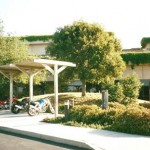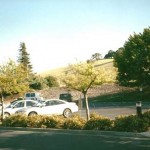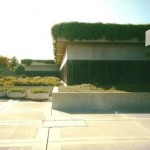Introduction (2013)
In the dot com era of the late 1990s and very early 2000s, IT companies ran lavish press trips. Most generated pretty awful journalism, partly because the companies wanted to get something out of organising the trip, partly because journalists treated such trips as paid holidays.
Peter Kirwan, my editor at Computing, sent me on my first press trip asking “how would you like to go to the Atlas mountains?” Another journalist at the paper, now a senior editor at a national newspaper, described IT journalists as having “working class pay, middle class attitudes and upper class lifestyles”. The main problem I found on such trips – apart from getting some sort of usable copy out of them – was how to order something from the expensive hotel room service that I could get past the editor when claiming expenses. I ate a lot of club sandwiches.
This particular press trip, to Parc Xerox, one of the key locations in the history of computing, did not work out like that. Xerox wanted to show off new research at its legendary research base at Palo Alto in Silicon Valley. I was keener on talking to some of the people involved in its amazing history. I did both: Xerox set up interviews with some of its longest-serving staff, as well as younger employees. We talked about the history of the personal computer, many elements of which were invented or pioneered at Xerox Parc, including windows, icons, the mouse and the laser printer. The firm failed to take full advantage of the research, letting Steve Jobs, who toured Parc in 1979, borrow ideas for Apple’s early computers. In 1996, he gave credit in saying that Xerox could have owned the entire computer industry.
But we also discussed drugs and beanbags in the early days – as publicised by a Rolling Stone article on the place in 1972, although apparently use of the former was overstated – and property prices in 2000 (great if you’d lived and worked at Parc for a few decades, but problematic for recruitment). It was also fascinating to see the place, which I called “a techie Eden” in the resulting article ‘Parc life’. It really felt like that, compared with the suburban sprawl of most of the Bay Area – as the sun-bathed snaps that illustrate this e-book show, it is a rather idyllic place.
What has happened since? Parc is still at 3333 Coyote Hill Road and is still owned by Xerox, although in 2002 the firm made it a separate company and allowed it to undertake research and development work for other companies and for the US government. An April 2013 article in the Economist discussed its promising new work on producing more efficient electric vehicle batteries through an adaptation of printing technology – although it started by mentioning the early inventions, and the beanbags.
More broadly, the iron grip of the personal computer on IT has loosened. You may well be reading this on a tablet or other mobile device, without a mouse. But elements of Parc Xerox’s vision, including windows (often now spinning around) and icons, remain. And despite visions of a paperless future, (and presumably to Xerox’s great corporate delight), the laser printer continues to go strong – and 3D printing is starting to revolutionise manufacturing. Even if its future work is less obviously world-changing as its early achievements, Parc will remain famous for a long time to come.
‘Parc life’ is a long piece of journalism rather than a history book – which I have edited and significantly extended here, using my original notes – and while it provides an introduction to Parc Xerox and its history, it is not the last word. I made a couple of recommendations for further reading in the original article; the details are the end of this page.





